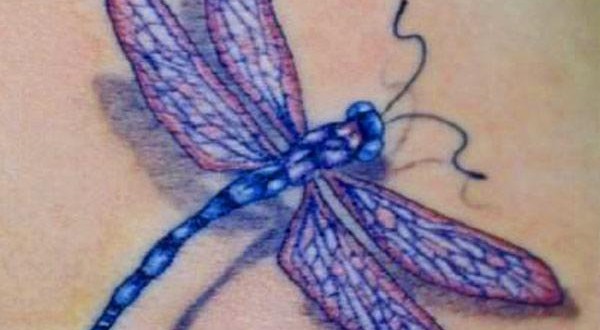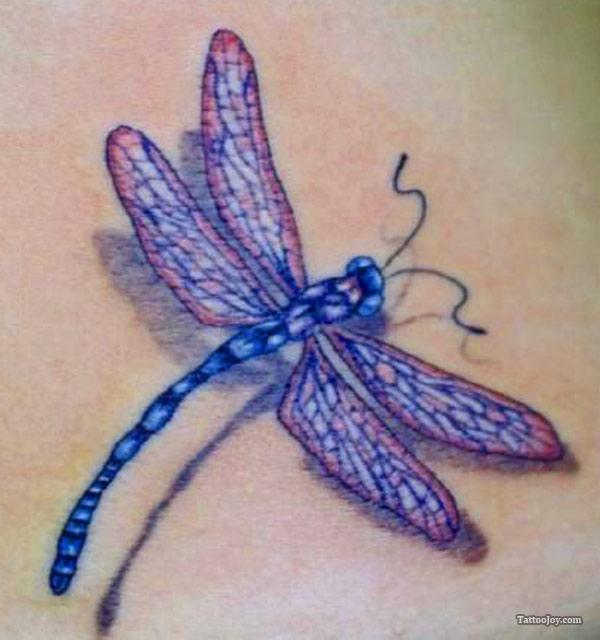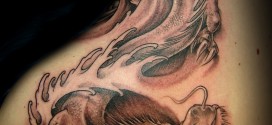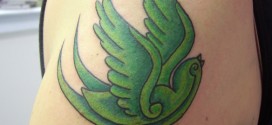Tattoo legend Norman “Sailor Jerry” Collins would have hated this article. The lifelong sailor and roughneck who revolutionized tattooing during the ’60s from his tiny shop in Honolulu’s gritty Chinatown developed a strict policy on dealing with the press: Don’t do it. He refused newspaper interviews. He threw a Hawaii Five-O film crew out of his shop. If you got pushy, he could always grab the spray bottle of homemade mace he kept at his workstation.
The rule didn’t just apply to him. Jerry frowned on anyone talking about tattooing outside of tattoo circles. When tattooer Lyle Tuttle appeared on the cover of Rolling Stone, Jerry taped the photo to the inside of his toilet seat. After local rival Lou Norman claimed during an interview that there was no purple ink in tattooing (a fact up to that point), Jerry used purple ink he had secretly developed to tattoo a large dragon on a client’s arm. He covered the tattoo and sent the kid to Norman’s shop to request one like it. As the tattooer launched into his explanation of why it wasn’t possible, the kid yanked up his sleeve to reveal the tattoo Jerry had given him. Norman suffered a heart attack. While Norman was recovering in the hospital, Jerry sent him a gift: a bouquet of purple orchids.
These are just a few of the stories revealed in Hori Smoku Sailor Jerry: The Life and Times of Norman Keith Collins, a new documentary that explores Jerry’s immeasurable impact on tattooing and tattoo art, from his work developing inks and needle groupings to his technique of adding Japanese-style shading to bold American designs. More than that, Hori Smoku looks at a character too big for what was then the tiny world of tattooing. It’s a portrait of an artist, a sailor, a fierce patriot, a radio show host, a poet, an innovator, and a man so passionate about tattooing that artists from New York to Tokyo sought him out in his Hawaiian hideaway. The few he let in, including Ed Hardy, Mike Malone, and Zeke Owen, went on to become tattoo legends in their own right.
Decades later, Jerry’s designs now appear on everything from Converse shoes to a line of Sailor Jerry rum, and books have been released of his illustrations and letters. But until now, no one has pieced together his legacy on film. After all, how do you make a movie about a man who hated publicity and whose motto, printed on his business cards, simply warned, “My work speaks for itself”?
The sun is setting over Waikiki Beach, creating sparkling purples and oranges across the Pacific Ocean, but Hori Smoku director Erich Weiss doesn’t care. Seated on the roof of Honolulu’s Marriot Hotel, the 35-year-old filmmaker is sucking on his third beer and worrying. He’s changed out of the bright red “Baywatch Crew” T-shirt he bought earlier at a beachside thrift store and into a button-down shirt. Later this evening his movie Hori Smoku will be screened at a club on the city’s historic Hotel Street, just a block from where Jerry’s shop once operated. But before that, Weiss will be meeting with David Collins, one of Jerry’s nine kids. Weiss created the movie without the involvement of Jerry’s family, choosing instead to focus on Jerry’s influence on tattooing, and tonight David will be the first sibling to see the movie that Weiss has made about his imposing father.
“I did what any normal person would do,” Weiss says before breaking into the self-deprecating laugh that punctuates a lot of his conversation. “I called him and said, ‘I just made a movie about your dad and I’d like to talk to you.'”
 |
 |
 |
 |
 |
 |
 |
 |
 Tattoo Fonts For Women and Women Tattoo Fonts Gallery For Men and Women
Tattoo Fonts For Women and Women Tattoo Fonts Gallery For Men and Women





